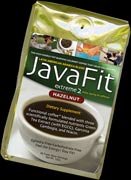This time we're turning the tides to good 'ol New Orleans, home of the 2nd Annual International Society of Sports Nutrition Conference and Expo. This conference was merely a few weeks ago, so Bodybuilding.com readers are getting the most up to date information without leaving their house!
Let's begin.

Conjugated linoleic acid supplementation does not reduce visceral adipose tissue in middle-aged men currently participating in a resistance-training program.

Conjugated linoleic acid (CLA) saw a brief rise in popularity a few years ago. The reason is that Conjugated linoleic acid is a supplement that has been proposed to increase metabolic rate, increase fat utilization, and thus, with these combined, result in weight loss.
 Here's a brief review of CLA before delving too far into this study. CLA is a group of positional and geometric isomers; that is, they are positioned differently as if putting them in front of a mirror, of a fatty acid known as linoleic acid. Linoleic acid, as well as linolenic acid, are fatty acids both required by our bodies. CLA is found primarily in dairy products (not in skimmed dairy products) and meat, specifically, beef and lamb. The typical dietary intake is around 212 mg/day for men and 151 mg/day for women.
Here's a brief review of CLA before delving too far into this study. CLA is a group of positional and geometric isomers; that is, they are positioned differently as if putting them in front of a mirror, of a fatty acid known as linoleic acid. Linoleic acid, as well as linolenic acid, are fatty acids both required by our bodies. CLA is found primarily in dairy products (not in skimmed dairy products) and meat, specifically, beef and lamb. The typical dietary intake is around 212 mg/day for men and 151 mg/day for women.
The research on CLA and body composition in animals has been extremely positive. For example, it has resulted in leaner pigs, mice, rats, and cows. However, these positive results have not been so consistent with humans. Most researchers have reported no change in body composition with CLA supplementation in humans.
Anyhow, with that said, here's this particular study for those who may still be considering the product.
Purpose::
-
This study was conducted to determine whether short-term CLA supplementation can result decrease visceral adipose tissue in resistance-trained, middle-age men. Visceral adipose tissue is that which is not visible to the naked eye (that is called subcutaneous fat).
While this may sound more appealing because it won't ruin your six-pack, it is actually more dangerous because this fat surrounds the organs and increases the risk of various diseases. Visceral fat is related to poor diets and physical inactivity.
Methods:
-
This was a double-blind, placebo controlled trial in which thirty active, middle-age men (35 to 55 years of age) were randomly assigned to either CLA or placebo groups (15 subjects/group). This was a 12-week study, divided into three 4-week periods.
The first four weeks were known as a stabilization period, in which each subjects received a placebo. The next 4 weeks were the supplementation period, so both groups received their respective product.
The CLA group received 3.2 g/day of CLA. Finally, during the last 4-weeks, all subjects just took a placebo. This period was known as the washout period. So, essentially the subjects in the CLA group were only taking the product for 4-weeks in duration. Something called computed tomography (CT) scans were used to measure visceral adipose tissue at weeks 4, 8, and 12.
 |
|||||
 |
|
 |
|||
 |
|||||
-
The results demonstrated that CLA supplementation for 4-weeks did not result in decreases in visceral adipose tissue. I have not been overly impressed with the CLA research out there; I would like to a see a similar study to this with a higher dose of CLA (some studies suggest it may be dose dependent), using different isomers of CLA (other studies suggest different isomers make a difference, although the ones used in this study were not listed), and also a study that was longer in duration. To me, four weeks of actual supplementation is not enough time to see any major change.

The Effects of JavaFit Energy Extreme Coffee Ingestion on Resting Energy Expenditure and Hemodynamic Responses.

Many of you may have heard of the new "designer" coffee, called JavaFit. It is fortified with a variety of dietary supplements and additional caffeine.
Purpose:
-
This study was conducted to determine whether JavaFit coffee (fortified with 150 mg additional
caffeine,
green tea extract,
niacin, and garcinia cambogia had differential effects on resting energy expenditure (kcals/day), blood pressure, resting VO2, and respiratory exchange ratio (this is a marker of fuel usage in the body) when compared to Folgers regular coffee.
Methods:

-
There were 10 subjects in this random, crossover designed study (5 male,5 female) with an average age of 27. All subjects were defined as regular coffee drinkers (>3 cups/week).
Subjects fasted for 10 hours and had their resting energy expenditure measured one hour before and three hours following coffee ingestion (note: JavaFit coffee had 600 mg of total caffeine; Folgers has 200 mg total caffeine).
Results:
-
The subjects in the JavaFit group had a significant increase in resting energy expenditure, systolic blood pressure, respiratory exchange ratio, and VO2 when compared to the Folgers group in both males and females.
Resting energy expenditure was increased by a mean of 14.4% for males and females compared to the Folgers group who saw a decrease in resting energy expenditure over time (-5.7%).
|
|
 |
||
 |
|||
These differences were seen from pre- to 3-hour post coffee consumption. Systolic blood pressure was also increased significantly in the JavaFit group. (note: systolic blood pressure is the top number in the blood pressure measurement).
In addition, resting VO2 was significantly increased by 14.9% from baseline to 3-hours post testing. There were no significant increases in resting heart rate in males and females.

Conclusions
The authors concluded that this study demonstrates JavaFit Energy Extreme coffee is effective at increasing resting energy expenditure in both male and female regular coffee drinkers for up to 3 hours following ingestion when compared to Folgers coffee. These findings shouldn't surprise anyone; the JavaFit coffee had 3 times the amount of caffeine than the Folgers. The study leaves a few open doors, though, in my mind.
Would this increase in resting energy expenditure continue past the 3 hour mark; 14.4%, while significantly greater than that seen in Folgers, is a very small amount of resting energy expenditure over a 3-hour period.
Just to give an example; if someone's resting energy expenditure is 1500 calories over a 24 hour period that means there is a caloric expenditure of around 62 calories per hour (1500/24).
If there was a 14.4% increase, that's a very small number. Now if this value continued over the entire day, it would be about a 200 calorie difference; no study has examined this using JavaFit coffee. In addition, the significant increase in systolic pressure concerns me a bit.
The subjects in this study were all young men and women; if a middle-age, overweight, man or woman with already high blood pressure were to drink this product, they may have some concerns.
Well, that wraps up just two studies presented at this conference. There were many more abstracts related to dietary supplements and performance; I will review each of the ones I feel are pertinent over the next few weeks.
About The Author
For more cutting edge information by Chris, check out the Nutrition Fitness Coach program he just created in conjunction with the National Endurance & Sports Training Association (NESTA). There is a huge 1/2 price sale through the end of the month going on right now! The program includes a manual by Chris that's jam packed with nearly 100 pages of the most up-to-date nutrition information, a 1 hour CD with a live interview of Chris, and a Sports Nutrition textbook from a well-known leader in the field--all for only $129.
Many of you spend more than that just on supplements each month! This program is ideal for trainers trying to help their clients by learning more about nutrition and those interested in applying the proper nutrition techniques for their own physique. Check out http://www.nestacertified.com/nutritionist.html.

